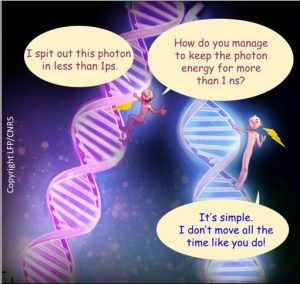 |
Head : Gérard BALDACCHINO The activities of the research group « Dynamics and Interactions in COndensed phase » (DICO) are focused on physicochemical processes involving simple molecules, multichromophoric systemsand nanocrystals in solution, with particular emphasis on molecular interactions and dynamical aspects. It studies electronically excited states and their relaxation, energy and charge transfer, ionization, radical formation and reaction dynamics using steady-state and time-resolved optical spectroscopy (absorption, fluorescence), from femtoseconds to milliseconds. The main topics are:
|
Thématiques
Physics and chemistry for life sciences and the environment
, Physics and life



